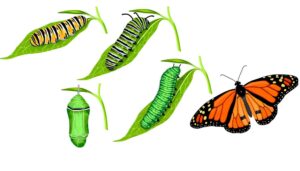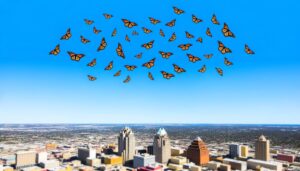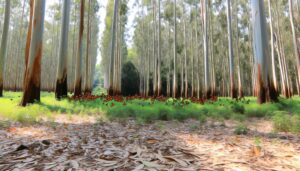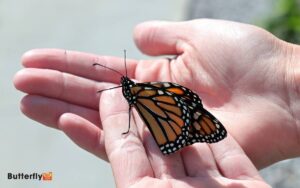Seven Reasons to Visit the Monarch Butterfly Grove at Trilogy
The Monarch Butterfly Grove at Trilogy is an essential overwintering site for monarch butterflies, showcasing intricate migratory and clustering behaviors. Spanning thousands of kilometers, their migration leverages environmental cues and advanced navigational skills.
From November to March, monarchs cluster densely on oyamel fir trees, exhibiting remarkable thermoregulatory strategies. Ideal viewing occurs on sunny, calm days, particularly in the early morning.
Located within the Trans-Mexican Volcanic Belt, the site is accessible via well-marked trails. Conservation efforts are critical to mitigate threats such as habitat fragmentation.
Understanding these efforts provides deeper insights into preserving this delicate ecosystem.
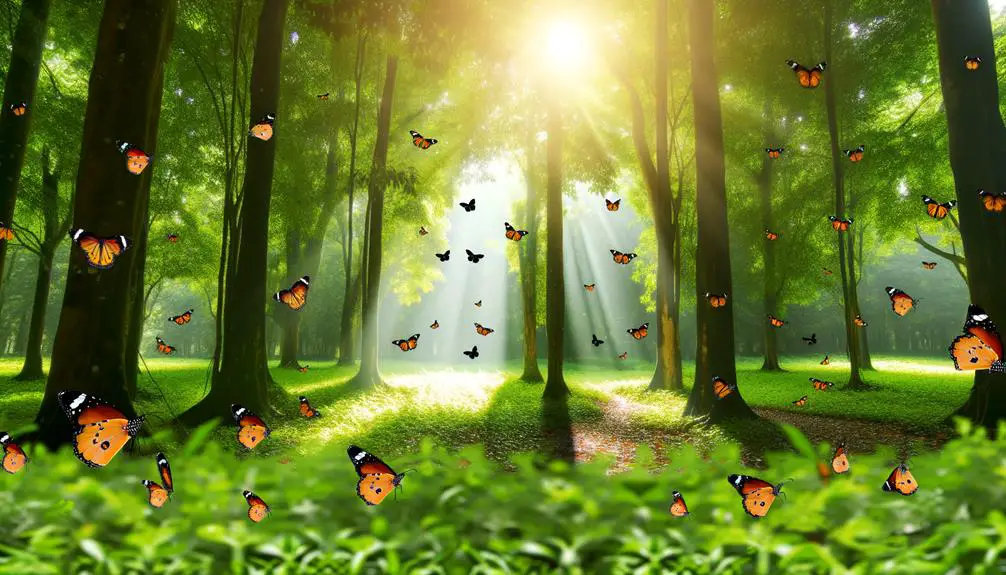
Key Takeaways
- Monarch Butterfly Grove at Trilogy offers guided tours to observe dense clustering and unique behaviors of monarch butterflies.
- The best viewing times are from November to March, with early mornings providing increased butterfly activity.
- The grove is part of a larger conservation effort to protect the monarch's migratory habitat and promote environmental stewardship.
- Located within the Trans-Mexican Volcanic Belt, the grove is accessible via major highways and well-marked trails.
The Migration Journey

Annually, millions of monarch butterflies commence on an extraordinary migration journey spanning thousands of miles from North America to their overwintering sites in central Mexico.
This biannual migration, involving multiple generations, is a complex phenomenon dictated by environmental cues such as temperature and daylight changes.
Monarchs exhibit a remarkable navigational ability, utilizing a combination of the Earth's magnetic field and the position of the sun to traverse vast distances.
During this journey, they rely on milkweed for sustenance and reproduction.
Observations indicate that their flight altitudes can vary considerably, often dictated by prevailing wind patterns.
The migration not only underscores the resilience and adaptability of Danaus plexippus but also highlights the interconnectedness of ecosystems across continental scales.
Best Viewing Times
Ideal viewing times for observing monarch butterflies in their overwintering sites in central Mexico are typically during the months of November through March, when the butterflies cluster in dense aggregations on oyamel fir trees.
During these months, the monarchs exhibit a unique thermoregulatory behavior, forming dense clusters that resemble shimmering orange and black curtains.
Early mornings are particularly advantageous for observation, as the butterflies become more active with the rising temperatures and sunlight.
The midday period, when temperatures peak, often sees the monarchs taking flight in search of nectar, providing a breathtaking spectacle.
Observers should note that wind and rain can greatly reduce butterfly activity, making calm, sunny days the most favorable for viewing these magnificent insects in their natural habitat.
Grove Location and Access

To witness this extraordinary phenomenon, it is imperative to visit the monarch butterfly groves located within the Trans-Mexican Volcanic Belt, particularly the Monarch Butterfly Biosphere Reserve, a UNESCO World Heritage site.
This reserve spans an elevation of 2,400 to 3,600 meters and is characterized by oyamel fir forests, which are essential for monarch hibernation.
Accessibility is facilitated via major highways connecting Mexico City to the towns of Angangueo and Zitácuaro. Upon arrival, visitors can access the groves through well-marked trails, guaranteeing minimal ecological disturbance.
The reserve's infrastructure supports educational tours, providing deeper insights into the habitat's ecological significance. It is recommended to use local guides to enhance the experience and guarantee adherence to conservation protocols.
Butterfly Behavior
Monarch butterflies exhibit a remarkable migratory behavior characterized by their annual journey spanning thousands of kilometers from North America to central Mexico. This migration, a multigenerational endeavor, involves precise navigational abilities, possibly utilizing a combination of the sun's position and the Earth's magnetic field.
Monarchs exhibit a unique reproductive diapause during migration, suspending egg-laying to conserve energy. At the Monarch Butterfly Grove, these lepidopterans demonstrate clustering behavior, forming dense aggregations on trees to maintain body heat.
Roosting in eucalyptus, cypress, and pine trees, they enter a state of torpor, reducing metabolic rates to survive cooler temperatures. The intricate interplay of environmental cues and innate biological mechanisms underscores their extraordinary resilience and adaptation, embodying nature's inherent freedom of movement.
Conservation Efforts

The migratory patterns and behaviors of Monarch butterflies underscore the importance of conservation efforts aimed at preserving their critical habitats and ensuring the sustainability of their populations.
Habitat fragmentation, pesticide usage, and climate change are key threats jeopardizing their survival.
Conservation initiatives at Trilogy focus on habitat restoration, including planting native milkweed and nectar sources, essential for larvae and adult nourishment.
Monitoring programs track population dynamics, aiding in adaptive management strategies.
Public education campaigns encourage community involvement, fostering a collective responsibility towards environmental stewardship.
Conclusion
The monarch butterfly grove at Trilogy epitomizes the delicate balance of nature's intricate systems.
Observations reveal that ideal viewing times align with the species' migratory patterns, allowing for detailed study of their behaviors and habitat preferences.
Comparable to the synchronization of a well-tuned orchestra, the conservation efforts at the grove demonstrate how harmonious intervention can sustain fragile ecosystems.
This ensures that these majestic insects continue to grace the landscape, much like a fleeting symphony of life.

